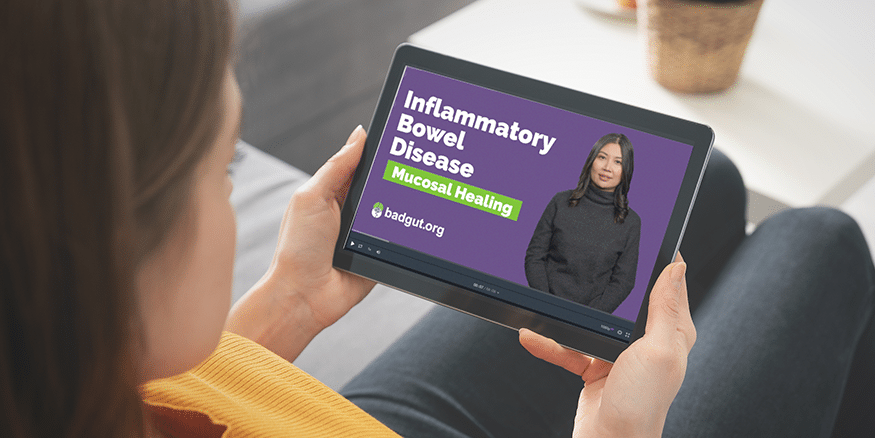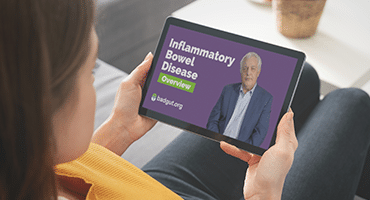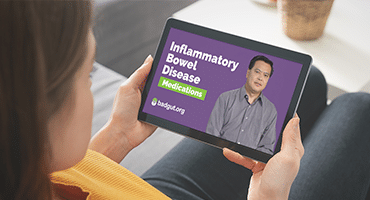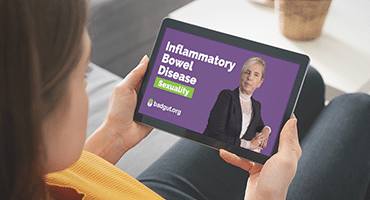
Mucosal Healing in IBD (Crohn’s & Colitis) Video
Featuring
Dr. Yvette Leung, MD, FRCPC
Gastroenterologist
Associate Clinical Professor,
University of British Columbia
Video Transcript
If you have inflammatory bowel disease but are currently feeling well, you might wonder why your doctor continues to run all sorts of tests. In this video, I’ll explain why it’s important to measure the status of your disease, even when you don’t have any symptoms.
Inflammatory bowel disease, or IBD, is a chronic condition that results in damage to the digestive tract. There are two primary forms of IBD: Crohn’s disease and ulcerative colitis.
A disordered immune response causes damage to the inner lining of the intestine, known as the mucosa. This damage is responsible for many of the symptoms in IBD, particularly Crohn’s disease. These may include abdominal pain, fatigue, poor absorption, and bleeding. While you might think the goal of treating IBD should be improving the symptoms, your physician will likely focus on concrete measurements to make sure that the underlying inflammation is under control.
For example, you might start taking a new medication and feel much better, yet your physician will continue to request tests. This can be frustrating, since you’re doing well and just want to enjoy the experience. You might think that if you feel fine, you have no reason to visit your physician or have so many tests. However, the reason your gastroenterologist still wants to monitor you is that mucosa healing is more important in the long run than symptom resolution.
A medicine might be making you well enough to feel better temporarily, but if it isn’t leading to your mucosa healing, then you’re at risk of having another flare soon. Your physician’s goals are for you to achieve and maintain remission, avoid complications, hospitalizations, and surgery, prevent disease-related mortality, and improve your quality of life.
With these goals in mind, the main tools that your healthcare team will use to determine your state of mucosal healing are endoscopy, fecal calprotectin, and therapeutic drug monitoring.
The most accurate method of analyzing inflammation in the gut is endoscopy. This procedure involves your physician inserting a long, narrow tube with a camera on one end into your digestive tract. The type of endoscopy your physician will preform depends on which part of the gut they wish to view. A colonoscopy involves looking at the entire large intestine, whereas a sigmoidoscopy looks at just the lower portion. Less often, your physician might perform a gastroscopy to look at your upper digestive tract. Scoping is beneficial because your physician can both look for visible signs of inflammation and take samples, or biopsies, of the mucosa for further testing.
Fecal calprotectin is an especially valuable tool because it is a simple, non-invasive test that measures the amount of a protein called calprotectin in your stool. You collect your own stool sample and bring it to a lab for analysis, so it’s a much simpler procedure than scoping. Elevated levels of calprotectin can indicate inflammation of the mucosa. Results from this test may help your physician decide to adjust your current medication dosage or frequency to best ensure that you stay in remission. The results will also help guide decisions about whether or not you need to switch to a different medication or add another medication to your treatment plan. A key goal in treatment is to have steroid-free remission, as long-term use of steroids can cause other problems, including bone loss.
If you want to be more involved in your treatment, make sure you use the services offered at your patient support program.
Today, we are fortunate that the quality and quantity of life for a person who has IBD can be close to normal, with newer drugs that have revolutionized treatment for these individuals, and modern testing methods.




